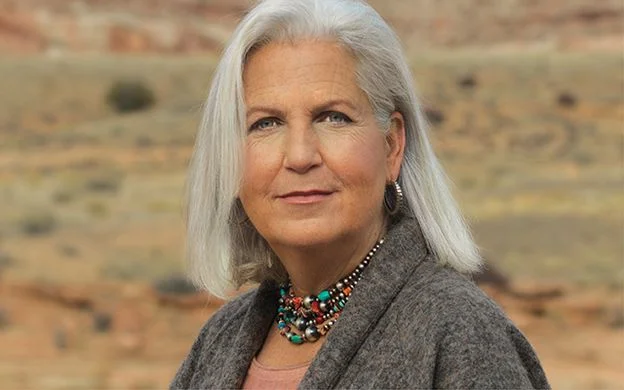Whole Earth: How the Other Half Lives (Kim Crumbo)
Our theme this month is Homelands. Here are excerpts from a blog by legendary conservationist Kim Crumbo on our planetary homelands and the necessity of protecting and restoring other species’ habitats. Read Kim’s original blog here.
Whole Earth: How the Other Half Lives
The Earth Charter Preamble reads:
We stand at a critical moment in Earth’s history, a time when humanity must choose its future. As the world becomes increasingly interdependent and fragile, the future at once holds great peril and great promise. To move forward we must recognize that in the midst of a magnificent diversity of cultures and life forms we are one human family and one Earth community with a common destiny. We must join together to bring forth a sustainable global society founded on respect for nature, universal human rights, economic justice, and a culture of peace. Towards this end, it is imperative that we, the peoples of Earth, declare our responsibility to one another, to the greater community of life, and to future generations.
The forces of Nature are such that our existence is a demanding and uncertain adventure. Like it or not, we remain a biological species in a biological world, wondrously well-adapted to the peculiar conditions of the planet’s former living environment, but not to our current environment or the one we are creating for the future.
The resilience of life on Earth and the wellbeing of humanity depend upon preserving a healthy biosphere with all its ecological systems, a rich variety of plants and animals, fertile soils, pure waters, and clean air. The global environment, with its finite resources, is a common concern of all peoples. The protection of Earth’s vitality, diversity, and beauty is a sacred trust.
In his recent book, Half-Earth, preeminent ecologist E. O. Wilson cautions us “that only by setting aside half the planet in reserve, or more, can we save the living part of the environment and achieve the stabilization required for our own survival.” Put another way, Wilson’s premise—based on his own extensive research and that of many other esteemed scientists—is that we must protect at least half of the Earth’s land and water to sustain Nature’s complexity, ecological processes, and diversity of life. This is our global imperative, challenging yet doable.
The fate of all life lies inextricably entwined with humankind’s behavior. We can ill afford to wait until our species is thoroughly enlightened, so we must empower inquiring, knowledgeable, and caring citizen leaders who can help to create a better and more peaceful world through intercultural understanding and respect for the Earth. I call this a Whole-Earth strategy.
The resilience of life on Earth and the wellbeing of humanity depend upon a Whole-Earth approach to preserving a healthy biosphere. (NASA)
Devils and Angels
“We men are wretched things,” spoke Achilles, one of the man-killing heroes at the slaughter at Troy. Literature abounds with convincing examples of the dark side of Homo sapiens. The early great epics—The Iliad, The Odyssey, The Aeneid, The Voyage of the Argo—provide fascinating accounts of the ancient world’s mythological heroes immersed in war environments brimming with violent behavior toward women, children, slaves, other fellow countrymen, and animals.
Indeed, my own formative years with SEAL Team One, during which I engaged in roughly 70 combat operations in Vietnam, helped shape my worldview that “some humans ain’t human, some people ain’t kind” (to borrow from singer/songwriter, John Prine).
And yet, we find hope.
… America’s public lands will obviously need to play a major role in any North American Whole-Earth strategy—especially in the context of climate disruption, which will likely require habitat shifts for many plant and animal species. Among their many values, public lands provide critical habitat for large carnivores and countless other wildlife, and present people with places to experience the physical, emotional, and spiritual benefits of wilderness.
Optimism in The Sixth Extinction
Some 65 million years ago, a 12-kilometer-wide asteroid crashed into the present-day coast of Yucatan, wiping out 75 percent of all the planet’s species in what scientists have described as the Fifth Extinction. So ended the Mesozoic, the Age of Reptiles, and began the Cenozoic, the Age of Mammals. An estimated 10 million years is required to recover from each great extinction event. Due to human activity the current rate of extinction is 1,000 times higher than natural background rates. Thus, we now find ourselves in the so-called Anthropocene, the Epoch of Man—or, the Sixth Extinction.
As E.O. Wilson puts it, the Half-Earth proposal first of all offers an emergency solution to saving and stabilizing at least 80 percent of the planet’s diversity of life. Half-Earth also enhances current conservation efforts by offering an achievable, albeit difficult, goal. It offers more than hope.
Pinker wrote:
We cannot be complacently optimistic about [environmental destruction], but we can be conditionally optimistic. We have some practicable ways to prevent the harms and we have the means to learn more. Problems are solvable. That does not mean that they will solve themselves, but it does mean that we can solve them if we sustain the benevolent forces of modernity that have allowed us to solve problems so far.
The point of this essay is to urge conditional optimism. Rather than hope and wait for the second coming, rescue by Martians, Republican enlightenment, or other such fantasies, the better angels of our society must insist upon our using the best available science and adhering to our democratic values in order to protect and restore Wild Nature. Our Whole Earth, this tiny living outpost in a vast and lonely universe, is our only home. Let’s remember: There is no Planet B.
###
Kim Crumbo is Western Conservation Director for Wildlands Network and Director of Conservation for Grand Canyon Wildlands. Read his entire post on WildlandsNetwork.org.
###








